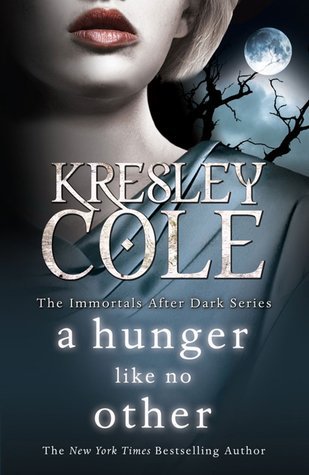There is really no situation much worse than finding yourself caught in a presentation or conference where the person speaking has something important to share, but remains clearly unable to share it. Those moments are a great reminder that, in order to reach someone with the message of the gospel, we first must be able to capture his or her attention.
As a church leader, you may be confident and used to speaking in front of audiences of all sizes. However, truly connecting with people requires more than confidence and experience. Great communicators have a plan for developing their message to present it in a compelling and engaging way.

THE QUICK SUMMARY – Show and Tell, by Dan Roam
For the vast majority of us, giving a presentation is an extremely difficult and nerve-racking process, whether we’re in a one-on-one meeting, a conference room with a dozen strangers, or a lecture hall in front of thousands.
But according to Dan Roam, the visual communications expert and acclaimed author of The Back of the Napkin, it doesn’t have to be so hard. We struggle when we forget the basic steps we learned in kindergarten: show and tell.
In this short but powerful book, Roam introduces a new set of tools for making extraordinary presentations in any setting. He also draws on ideas he’s been honing for more than two decades, as an award-winning presenter who has brought his whiteboard everywhere from Fortune 500 companies to tiny start-ups to the White House.
Even if you’re already a good speaker, you’ll learn more about understanding your audience, organizing your content, building a clear story line, creating effective visuals, and channeling your fear into fun. And you’ll master three fundamental rules:
- When we tell the truth, we connect with our audience, we become passionate, and we find self-confidence.
- When we tell a story, we make complex concepts clear, we make ideas unforgettable, and we include everyone.
- When we use pictures, people see exactly what we mean, we captivate our audience’s mind, and we banish boredom.
From nailing the opening to leaving a lasting impression, you’ll soon be able to give the performance of a lifetime—time after time.
A SIMPLE SOLUTION
The foundation of every presentation is its content. Your accompanying visual imagery may be stunning, but if you say nothing, you will achieve nothing. You are standing before you audience for a reason – you are trying to communicate with them. The content of your message is what you want your audience to remember and act on.
You audience comes into the room with their own preconceived notions about your topic. They are also bringing with them any and everything that’s on their minds. Many of them are probably looking ahead to the next thing on their schedules.
How can anyone hope to grab the listener’s attention given those parameters?
It begins with the end result: “After I’ve finished presenting, how do I want my audience to be different from when I started?”
How you answer that question tells you which storyline to use.
Clear storylines are our best defense against confusion. They force complexity into submission long enough to be tamed.
Here are the four essential types of storylines.
The Report brings data to life. With a report, we change our audience’s information. A good report delivers the facts. A great report makes the facts insightful and memorable.
The Explanation shows us how. With an explanation, we change our audience’s knowledge or ability. A good explanation takes our audience to a new level. A great explanation makes it effortless.
The Pitch gets us over the hurdle. With a pitch, we change our audience’s actions. A good pitch gives our audience a solution to a problem. A great pitch makes that solution undeniable.
The Drama breaks our heart, then mends it. With a drama, we change our audience’s beliefs. A good drama makes us feel someone’s struggle. A great drama makes us feel the struggle is our own.
Every storyline is different, but they have two things in common:
They have a beginning and an end. One reason many presentations fail is because they don’t go anywhere. Good presentations always move along. The end point is always higher than the beginning point. Another reason presentations fail is because they don’t trigger any change. Good presentations always move up. In other words, an extraordinary presentation begins with knowing how far and how high we want to take our audience.
Dan Roam, Show and Tell
A NEXT STEP
Select three top ideas that your team is considering for future action – ideas that have not been done before. Together with your team, identify the most important actors or stakeholders for each idea. Think about their role and influence on the success of the idea and list your thoughts on a chart tablet.
Define the moments when each stakeholder will get to know an idea, accept it, use it, or decline it. Create a “stakeholder’s diary” for each person chosen, and write down these moments in the diary.
Example of a stakeholder – members who want to know more about discipling in everyday lives. Moment – several members have reacted positively to a recent sermon series on disciplemaking, and want to know how they can begin to practice disciplemaking in their workplace. What will you tell them? Prepare the diary according to the specific moments and give it to the stakeholder.
Build a story to support your stakeholder diary, using one of the four types of storylines outlined above. Make sure your story is descriptive and helps bring the idea to life.
Do the same with the other two ideas and reflect on the answers the stakeholders have filled in their diaries to help you choose the idea and move forward with it.
Reviewing and understanding the answers and insights into their acceptance of ideas at different moments will help you craft the stories needed to move forward with the idea.
– Adapted from “75 Tools for Creative Thinking” by Booreiland Design
Excerpt taken from SUMS Remix #52, October 2016
Part of a weekly series on 27gen, entitled Wednesday Weekly Reader
Regular daily reading of books is an important part of my life. It even extends to my vocation, where as Vision Room Curator for Auxano I am responsible for publishing SUMS Remix, a biweekly book “summary” for church leaders. Each Wednesday I will be taking a look back at previous issues of SUMS Remix and publishing an excerpt here.
Advertisements Share this:




